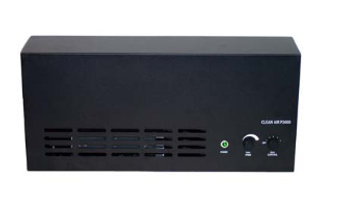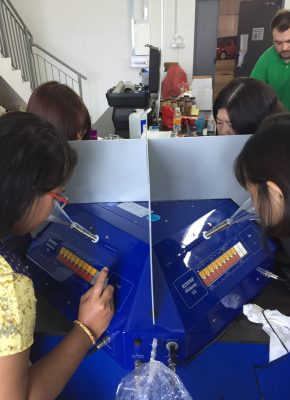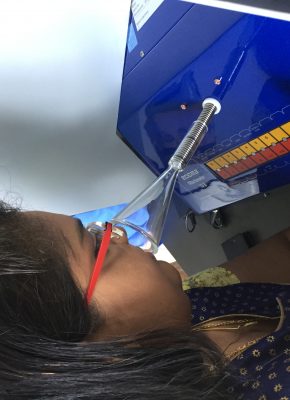
What are you breathing in?
Sometimes, the air that you breathe isn't just air.
Particulate matter, VOCs, carbon monoxide, mould, bacteria...
These are just some of the things that can affect the quality of
the air you breathe, especially in a closed environment.
Monitor your surroundings - learn what factors in the
environment are affecting the health of you, your employees,
and your colleagues.
Scroll down to learn how we can help you monitor your living environment.
We provide a suite of monitoring and testing services to ensure the health of your people, the safety of your workplace, and the sustainability of your work.
Air contaminants, foul odours, and noise pollution have a real impact on your organization’s bottom line.
One of the most fundamental and established relationships in the literature on healthy buildings is that of poor indoor environmental quality and higher rates of sickness. This in turn leads to increased absenteeism, staff turnover, and medical costs.
We provide a suite of monitoring and testing services to ensure the health of your people, the safety of your workplace, and the sustainability of your work.
Air contaminants, foul odours, and noise pollution have a real impact on your organization’s bottom line.
One of the most fundamental and established relationships in the literature on healthy buildings is that of poor indoor environmental quality and higher rates of sickness. This in turn leads to increased absenteeism, staff turnover, and medical costs.

Above: The AtmosAir P2000 Air Purification Unit
Indoor Air Quality Assessment and Investigation
We measure air quality along three dimensions:
- Thermal Comfort
– Air Temperature and Operative Temperature
– Air Movement
– Relative Humidity - Chemical Airborne Contaminants
– Carbon Dioxide
– Carbon Monoxide
– Volatile Organic Compounds
– Formaldehyde
– Ozone
– Respirable Suspended Particles (4 to 10 microns) - Bioaerosal Contaminants
– Total Viable Mould Count
– Total Viable Bacterial Count
– Speciation of Bacteria in Indoor Air
– Identification of Mould in Indoor Air
Testing is done in a SAC-Singlas accredited laboratory to ensure that results are reliable and accountable.
Odour Monitoring and Assessment
The human nose is the most sensitive odour detector – studies have shown that in tests of odor detection, humans outperform the most sensitive measuring instruments such as the gas chromatograph. Put an average person in a room with trace amounts of hydrogen sulphide, and he or she will register the rotten egg smell long before most measuring equipment do. Detection limits of chemical analysis devices are also often to high to quantify odorous compounds.
We leverage on this through dynamic olfactometry. This generates standard sensory analyses, with the principal tool to measure odor characteristics being a trained jury of “noses”. An olfactometer dilutes the odorous gas samples and presents these dilutions to the jury. After obtaining the responses of the jury, a statistical treatment of the data permits the olfactometric result to be calculated.
This methodology is internationally recognized, with EN13725 and ISO17025 calibration certificates.
Noise Monitoring
Prolonged exposure to excessive noise is harmful to health, and can cause several detrimental effects including noise-induced deafness (NID), tinnitus, acoustic trauma, and disruption of job performance.
Apart from having an adverse impact on your employees, excessive noise can lead to complaints from the public, particularly in residential areas. Noise pollution also affects the local biodiversity: noise exceeding 85 decibels can cause hearing loss, mask environmental cues and animal signals, create stress, and cause behavioural changes such as the abandonment of territory or lost reproduction.
Noise monitoring is legally required in Singapore under:
- Workplace Safety & Health Act (Chapter 354A) – Noise Regulations
- Environment Protection & Management Act (Chapter 94A, Section 77), Environmental Protection & Management (Boundary Noise Limits for Factory Premise Regulations)


